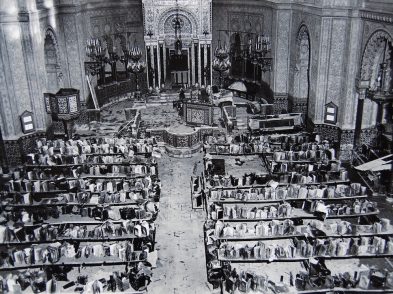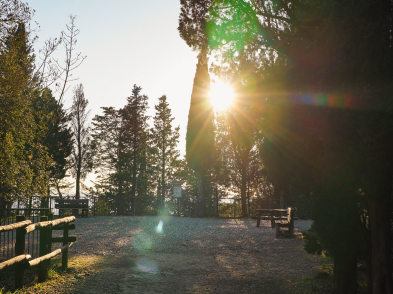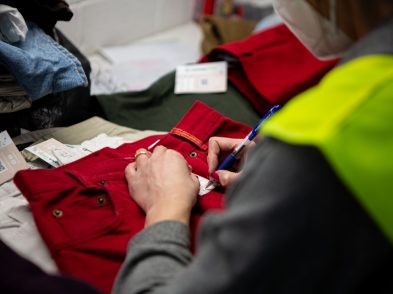About the exhibit Americans in Florence: Sargent and the American Impressionists, private donor Maria Manetti Farrow writes, ?My life has been shaped by two countries and two cultures. My world is not split by this fact but has been deeply enriched on every level. To support [this exhibition] speaks directly to my own experience and to my heart.’ Palazzo Strozzi’s latest will resonate with anyone who straddles two cultures or fell in love with Florence.
For the expat viewer, looking at Florence and the surrounding Tuscan countryside through the eyes of the 30-some American painters who worked here between the mid-nineteenth century and the start of World War I can only be a personal experience. In the opening section, the disarray of John Singer Sargent’s Hotel Room, illuminated through closed green shutters, might as well be a snapshot of my own first encounter with this city, as a North American student in a San Lorenzo pensione. Like the Americans a century and a half before me, I felt excitement at the boisterous markets, and I believe I might have felt a sense of independence similar to that experienced by the brave female artists who came to Europe from the United States hoping to make a career on their own. Impressionist paintings like William Merritt Chase’s 1909 Orangerie and his Italian Garden of the same year evoke the senses of smell and visual excitement that I felt on that first, fateful trip. The American ?explorers’ 150 years ago were setting later generations up for an almost genetic attraction to our city.
When people ask me why I moved to Florence-and why I have stayed-I struggle to find a logical answer. Perhaps that answer lies in this exhibition, in seeing what appealed so much to these artists who sought to capture the Old World through new artistic forms, tinged with more or less heavy American academic baggage. And while I struggle with my logic and my justification, historian and writer Henry Adams (1838-1918) simply wrote, ?Italy [is] mostly an emotion.’ The style adopted by Adams’ peers attempts to translate that emotion into paint and words.
The exhibit starts slowly, like a novel by another Henry, Henry James, with a large cast of characters described visually, often by each other. It is good to get to know them now, for these people will be our ciceroni in nineteenth-century Tuscany. The authoritative Sargent painted in the style of van Dyck on commission for the Uffizi’s self-portrait gallery; the dark and mysterious portrait of William Merrit Chase that reveals its painter, Frank Duveneck, as a figure to be reckoned with; the self-portrait of Egisto Fabbri, an attractive dandy around whom circled important American creatives; and Sargent’s portraits of influential literary figures Vernon Lee and Henry James, whose voices I only wish could be heard better in the gallery space.
Having met the protagonists, we are invited into their gardens and villas: these expats quickly learned that living in the centro was no fun, so they gravitated to the hillside villas that could be had cheaply at the time. Looking at Sargent’s 1910 At Torre Galli: Ladies in a Garden, one can understand the appeal of the lifestyle depicted by these artists: one of complete idleness. Women in voluminous white dresses laze in the foreground of the painting that shows a typical formal Italian garden with lemon trees in terracotta pots and a sculpture in a grotto at the back. What are they doing? Are they discussing philosophy or the theory of light? Or are they experiencing the emotion that Adams says is Italy?
Our American visitors explored the countryside at and beyond their newly rented homes by foot, bike, carriage or car, slowly acclimatizing to the jarring light of summer and the cool green of winter. Sargent is perhaps the most successful at capturing summer light in his painting Oxen Resting (1910) with its daring cobalt blue sky, though Duveneck’s 1886 Italian Courtyard comes close, too. Of the dozens of paintings and drawings in the exhibition’s section titled The Image of Florence and Tuscany, I believe that different works will resonate with each viewer depending on one’s recognition of places or feelings for them. For me, it was Chase’s gardens, very much in the French Impressionist style, that reminded me of some of my first pilgrimages out to Medici villas and gardens, the enchantment of the sweet smell of citrus plants and the crunch of gravel walkways beneath my feet. The beauty seen in these works that seek to capture a moment of structured rurality can still be found at the borders of Florence towards Settignano, Maiano and Fiesole.
This exhibit celebrates the ties between the old and new worlds on the 500th anniversary of the death of Florentine explorer Amerigo Vespucci, ties that are visibly strong in the financial support of the show from Florence’s Ente Cassa di Risparmio and important American donors: the Bank of America Merrill Lynch, Paulson Family Foundation, Jan Shrem and Maria Manetti Farrow, and the Terra Foundation for American Art.
During this celebration of Vespucci year, Mayor Matteo Renzi suggests reflection on what ?exploration’ means to us at this time. The American Impressionists highlighted here were explorers and innovators much like their sixteenth-cen tury counterparts, and those who made the reverse voyage back to the United States exported artistic learning that was highly influential for the next generation. These explorers, with their visual and textual tales, generated a mythical vision of Florence that has enchanted many travelers since.
As usual, Palazzo Strozzi offers numerous educational activities and events related to the exhibit. Look for details in the events section of each issue of TF and at www.vespucci2012.com.
Americans in Florence: Sargent and the American Impressionists
Palazzo Strozzi, Piazza degli Strozzi, Florence
March 3 to July 15, 2012
Admission 10 euro or less







